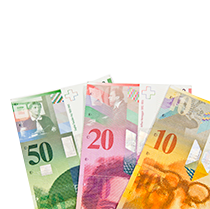A banknote is frequently known as a bill in the US and Canada, paper cash, or essentially a note is a kind of debatable promissory note, made by a bank or other authorized power, payable to the conveyor on request. Banknotes were initially given by business banks, which were legitimately needed to reclaim the notes for lawful delicate generally gold or silver coin when introduced to the central clerk of the beginning bank. These business banknotes are just exchanged at face value in the market served by the responsible bank. Business banknotes have essentially been supplanted by public Buy Real and Fake Documents Online is given by national banks or financial specialists.
Public banknotes are frequently – yet not generally – legitimate delicate, implying that courtrooms are needed to remember them as agreeable instalment of cash obligations Historically, banks looked to guarantee that they could generally pay clients in coins when they introduced banknotes for instalment. Today, most public monetary standards have no moving in valuable metals or wares and have esteem exclusively by fiat. Except for non-coursing high-esteem or valuable metal issues, coins are utilized for lower esteemed financial units, while banknotes are utilized for higher qualities.
Anti-counterfeiting measures :

Codex Hammurabi Law 100 c. 1755–1750 BC specified reimbursement of an advance by an indebted person to a lender on a timetable with a development date indicated in composed authoritative terms. Law 122 specified that an investor of gold, silver or other assets/versatile property for protection should introduce all articles and a marked agreement of bailment to a public accountant prior to storing the articles with a broker, and Law 123 specified that a financier was released of any obligation from an agreement of bailment if the legal official prevented the presence from getting the agreement. Law 124 specified that an investor with an authenticated agreement of bailment was qualified to recover the whole worth of their store, and Law 125 specified that a broker was responsible for the substitution of stores taken while in their ownership.
In China during the Han line, promissory notes showed up in 118 BC and were made of leather. Rome might have utilized a sturdy lightweight substance as promissory notes in 57 AD which has been found in London. Nonetheless, Carthage was suspected to have given monetary certificates on material or calfskin before 146 BC. Thus Carthage might be the most established client of lightweight promissory notes. The initially realized banknote was first evolved in China during the Tang and Song administrations, beginning in the seventh century. Its foundations were in shipper receipts of the store during the Tang administration 618–907, as dealers and wholesalers wanted to keep away from the substantial heft of copper money in enormous business transactions. During the Yuan line 1271–1368, banknotes were embraced by the Mongol Empire. In Europe, the idea of banknotes was first presented during the thirteenth century by explorers, for example, Marco Polo, with European banknotes showing up in 1661 in Sweden.
Falsifying, the phoney of banknotes is an innate test in giving money. It is countered by anti-counterfeiting measures in the printing of banknotes. Battling the falsification of banknotes and checks has been a primary driver of safety printing strategies improvement in the late hundreds of years.







